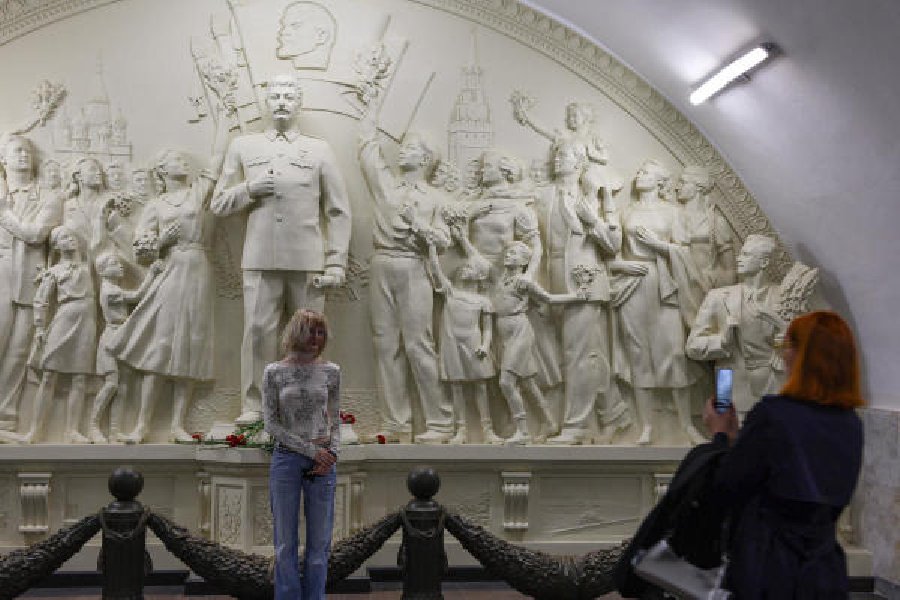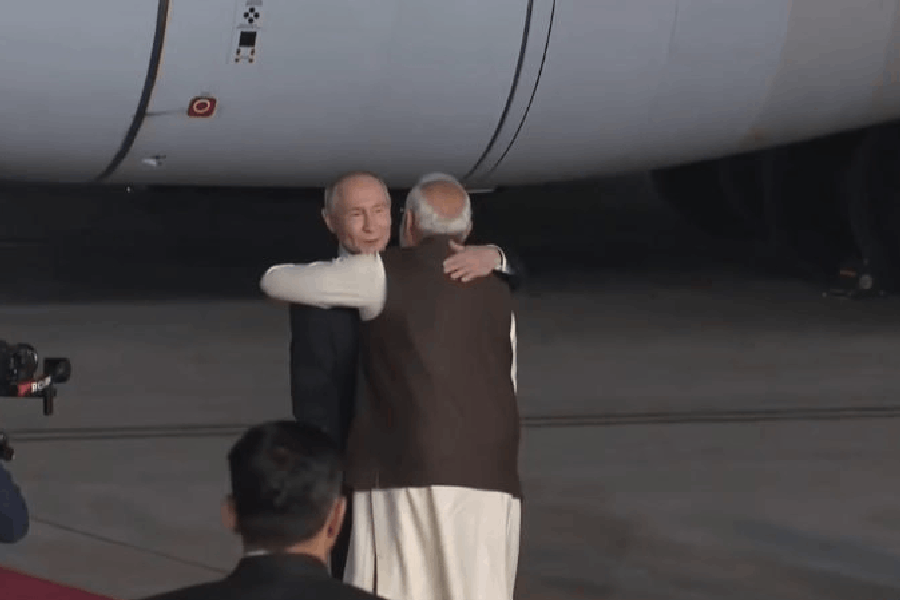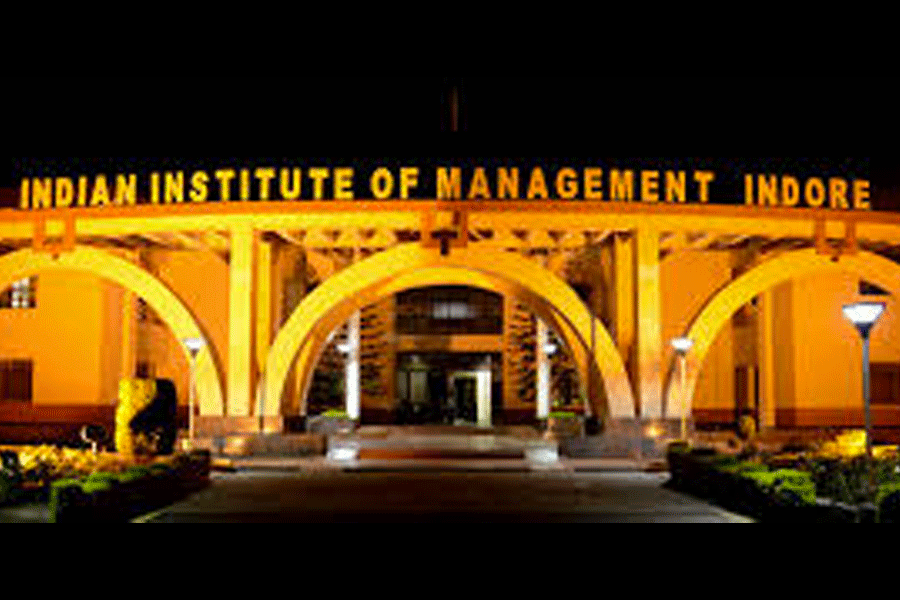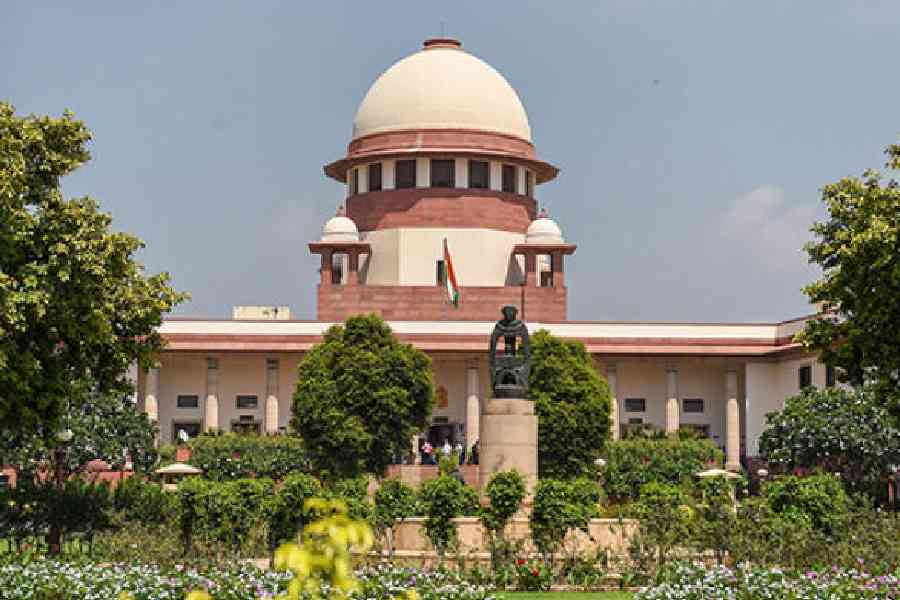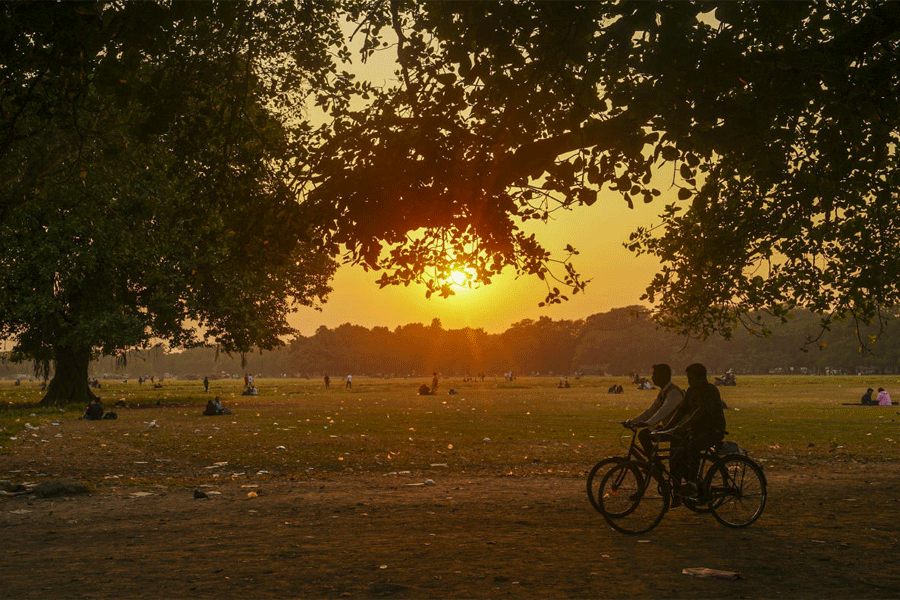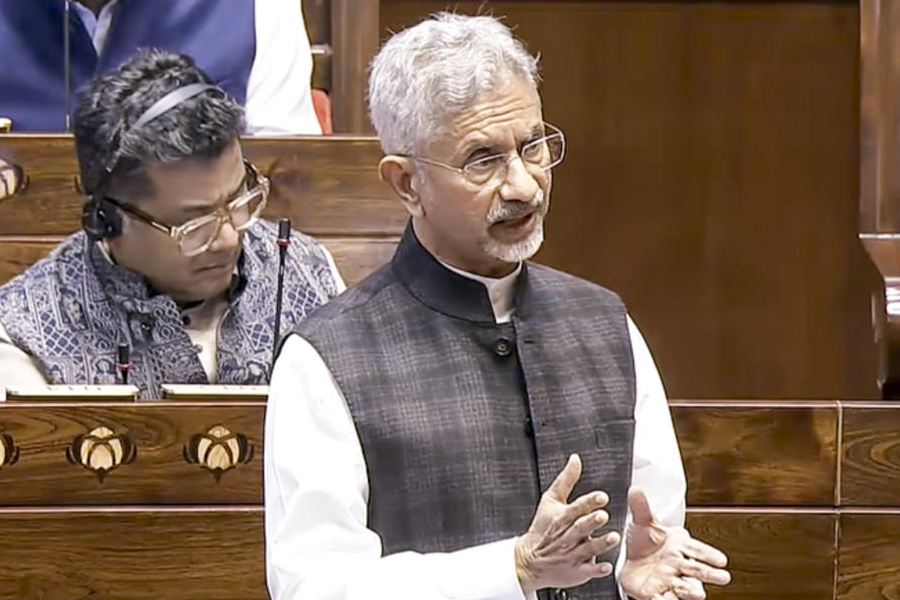After a nearly six-decade absence, the face of Joseph Stalin, the Soviet dictator who was not known for sparing lives to achieve his goals, is once again greeting commuters in one of Moscow’s ornate subway stations.
A new statue was unveiled by the authorities this month, showing Stalin gazing sagely into the distance, flanked by adoring workers and children holding out flowers to him. A replica of one that was removed in 1966 during a de-Stalinisation campaign, the new relief quickly became an attraction, with people leaving flowers, stopping to pose for pictures, including with their children, or just watching pensively.
The sculpture is part of the gradual rehabilitation of a brutal leader who still has the power to divide Russians, 72 years after his death. The Kremlin has revived parts of his legacy in its effort to recast Russia’s history as a series of glorious triumphs that it is determined to continue in Ukraine.
Among those admiring the work on a recent visit was Liliya A. Medvedeva, who said she was “very happy that our leader got restored”.
“We won the war thanks to him,” said Medvedeva, a pensioner born in 1950, adding that she was grateful that Stalin didn’t send her father to the Gulag even though he was taken prisoner during World War II — something that was equated with treason at the time. “Yes, there were many mistakes, but everybody makes mistakes.”
In a country where criticising government action can be dangerous, it is unclear how many people disagree with Medvedeva’s positive view, but some are dismayed, even enraged, by what they see as revisionist whitewashing of history.
Vladimir, a 25-year-old history student who refused to give his last name for fear of retribution, said he came to watch the crowd drawn by Stalin, whom he called “a bloody tyrant”.
“It is hard for me to express my own opinion,” he said. “But no other monument would draw as much attention.”
Stalin was responsible for mass purges, including the Great Terror of 1936 to 1938, when more than 700,000 people were executed, including military leaders, intellectuals, members of ethnic minorities, landowning peasants and others. Under his leadership, entire ethnic groups, like Crimean Tatars, were expelled from their homelands. His policies contributed to mass famine across the Soviet Union, including in Ukraine.
But nostalgia for the Soviet era is strong, especially among older generations traumatised by the painful transition to capitalism, reinforcing memories of Stalin as a strongman who imposed order on a sprawling country and led it to victory against Nazi Germany. His admirers see purges, famines and mass deportations as “excesses” for which overzealous local officials were mostly responsible.
Since Vladimir V. Putin took power more than 25 years ago, at least 108 monuments to Stalin have been erected across Russia, and the pace has accelerated since the invasion of Ukraine in 2022, said Ivan Zheyanov, a historian and journalist who has kept track of the statues. One was installed this year in the Ukrainian city of Melitopol, currently occupied by Moscow’s forces.
But none of them have the visibility of the new sculpture in the subway, passed daily by legions of Muscovites changing between the main circle line and the purple line.

